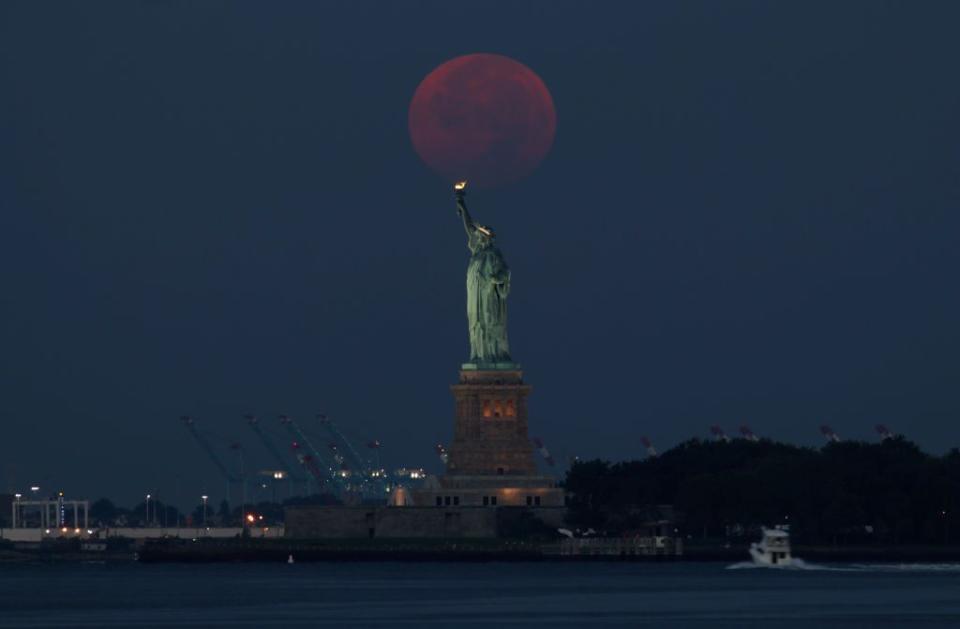There are 5 beautiful celestial events happening this week, including a Mars-rise
There are a number of beautiful events taking place in the sky above us this week. Here's a breakdown of what you can see in the upcoming summer evenings...
1. Sturgeon Moon
The first is August's full moon, known as the Sturgeon Moon, which will rise on Monday 3rd August. Known as the Grain Moon in the UK, August's full Moon will be visible all night and hang low in the night sky.
To view Monday's full moon, Edward Bloomer, RGM Astronomer, tells Country Living: "For best viewing, try to get somewhere with a clear horizon, elevated if possible, and as isolated as you can from artificial light sources. While you’re waiting, try and spot Jupiter and Saturn towards the south as the moon is rising."
2. Mars in perihelion
Secondly, in addition to the glowing full moon, Mars is in 'perihelion' this week. This means it is at its closest point to the sun during its orbit.
Mars' perihelion is a once-in-two-Earth-years event which can activate dust storms on the red planet.

3. Delphinus constellation
The week of August 3rd to 9th will also offer the chance to see the constellation of Delphinus. Delphinus' five brightest stars form the shape of a dolphin, with four stars representing the body and one the tail.
It's best viewed in summer skies, and can sometimes look less like a dolphin and more like a diamond.

4. Moonrise and Mars-rise
Further on in the week, on Saturday 8th August, the full moon will gradually shrink to a 73% illuminated waning gibbous Moon, as it makes a close approach to Mars, Forbes reports. This is what stargazers call an 'occultation' – the passage of one celestial body in front of another, which obscures the other from view.
5. Mercury
On Sunday 9th August, Forbes says it's worth trying to Mercury, the smallest and innermost planet in the Solar System, before sunrise. The publication suggests looking just before sunrise in a north-easterly direction through binoculars to find what will look like a tiny red dot.
Like this article? Sign up to our newsletter to get more articles like this delivered straight to your inbox.
You Might Also Like


